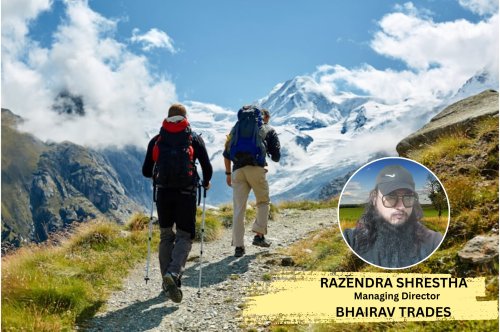Reviving Global Tourism

“Reviving Global Tourism: Opportunities and Challenges in Asia with a Focus on Nepal”
🌏 Introduction: The World Tourism Scenario Today
The global tourism industry has shown resilience and recovery following the unprecedented impact of the COVID-19 pandemic. As borders reopened and international travel resumed, tourism has bounced back with vigor—especially in regions rich in culture, nature, and heritage. The World Tourism Organization (UNWTO) projects that global tourist arrivals will return to pre-pandemic levels by 2025, with Asia leading the recovery due to its diverse offerings and increasing connectivity.
Tourism is not only a leisure activity—it’s a powerful economic driver, a source of employment, and a bridge between cultures. However, while global numbers are rising, challenges persist, especially in developing countries that rely heavily on tourism for economic stability.
🌏 Asia's Rising Influence in Tourism
Asian countries such as Thailand, Japan, Indonesia, Vietnam, and India are among the top destinations attracting millions of tourists each year. These countries offer unique combinations of natural beauty, spiritual heritage, modern infrastructure, and welcoming hospitality. Governments in these regions have also recognized the potential of tourism and are investing in digital tourism, sustainable practices, and capacity building.
South Asia, in particular, presents untapped tourism potential—home to the Himalayas, diverse cultural sites, and vibrant traditions. Among these nations, Nepal stands as a jewel for its breathtaking landscapes, rich culture, and spiritual experiences.
🏔 Spotlight on Nepal: Beauty and Barriers
Nepal, often referred to as the land of the Himalayas, is a dream destination for trekkers, mountaineers, and spiritual seekers. From the towering peaks of Everest to the serene temples of Kathmandu, Nepal offers a rare blend of natural and cultural heritage. The country welcomed nearly 1.2 million tourists in 2023, signaling its slow but steady recovery from recent setbacks.
However, despite its immense potential, Nepal faces several challenges in fully realizing its tourism capabilities:
🔍 Problems in Nepal’s Tourism Sector
1. Poor Infrastructure
Inadequate roads, airports, and sanitation facilities affect tourist experiences, especially in remote destinations.
2. Limited Digital Integration
Many tourism services and providers still lack digital presence, affecting online bookings and global outreach.
3. Environmental Degradation
Popular trekking trails and urban areas are facing pollution and over-tourism, threatening sustainability.
4. Political Instability and Bureaucracy
Changes in policy, slow implementation, and lack of coordination hinder long-term tourism planning.
5. Lack of Skilled Manpower
Many service providers, especially in rural areas, lack proper training and awareness about hospitality standards.
6. Insufficient Promotion
Nepal’s tourism marketing is often limited in global campaigns compared to neighboring countries.
💡 Solutions and the Way Forward
1. Infrastructure Development
Invest in quality transportation, waste management, and clean energy in key tourism zones.
2. Digital Tourism Platforms
Encourage local entrepreneurs and businesses to adopt e-commerce platforms like Spider Hospitality to improve online visibility and bookings.
3. Sustainable Tourism Practices
Promote eco-tourism, community-based tourism, and green policies to protect the environment and local culture.
4. Government-Private Partnership (PPP)
Strengthen collaboration between government bodies and private sector (hotels, tour operators, training institutions) to ensure consistent development.
5. Capacity Building and Training
Provide structured training for hospitality professionals and guides to enhance service quality and safety.
6. Global Marketing Campaigns
Launch comprehensive international marketing strategies that position Nepal as a safe, spiritual, and adventure-filled destination.
🌄 Conclusion: Nepal’s Tourism—A Sleeping Giant
Nepal holds extraordinary potential to become one of Asia’s top tourism destinations. With proper investment, smart policies, and strong collaboration between stakeholders, Nepal can not only attract more tourists but also ensure that tourism benefits its economy, people, and environment.
As the world embraces more mindful and experience-driven travel, Nepal's authenticity, spirituality, and natural beauty are its strongest assets. Now is the time to turn challenges into opportunities and write a new chapter in Nepal’s tourism journey.
Mrs. SHANTI SHRESTHA
LECTURER / HOSPITALITY PROFESSIONALS
















